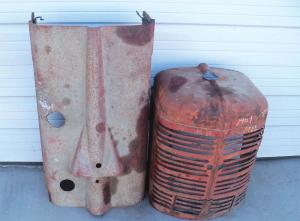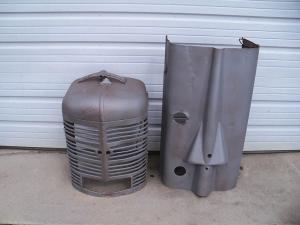2021 - Volume #45, Issue #5, Page #35
[ Sample Stories From This Issue | List of All Stories In This Issue | Print this story
| Read this issue]
Repainting System Removes Rust, Not Metal
 |
 |
“Normally, if you sandblast and wait overnight before priming, you get more rust,” says Deardorff. “I apply a coat of Chlor*Rid, and it reacts with remaining iron oxide (rust) and dissolves it, separating it from the metal. The entire surface turns dark. I can wait and sandblast again in the morning for a virtually paint-free surface.”
Better yet, Deardorff says the second sandblast doesn’t remove sound metal, and the Chlor*Rid works on stains other than rust. He uses the Chlor*Rid as one step in his Classic Blast restoration process. The process also uses a fine, dense mix of aluminum oxide, trace minerals and graded walnut shells for a blast medium.
“I believe I am the only person who can remove rust from 10-gauge metal without affecting the metal,” says Deardorff. “And I can remove a stain off any surface.”
Deardorff has coined the term Lifetime Coating to describe his resurfacing that equals the 5 to 7-step coating process used by the automotive industry.
“Chlor*Rid not only dissolves the rust, but also cuts salt content on the metal to less than 5 ppm,” explains Deardorff. “Any chloride over 10 ppm will produce rust.”
Deardorff recommends mixing Chlor*Rid at 1 part to 200 parts water. He then applies 10 gal. of the solution through his sandblaster.
“The industry doesn’t want paint to last,” says Deardorff. “With my system and Chlor*Rid, you stabilize the substrate, so the resurfacing will last longer.”
Contact: FARM SHOW Followup, Superior Coatings Co., 205 McCormick St., Chillicothe, Mo. 64601 (ph 660 646-6355; info@classicblast.com; www.classicblast.com).

Click here to download page story appeared in.

Click here to read entire issue
To read the rest of this story, download this issue below or click here to register with your account number.




